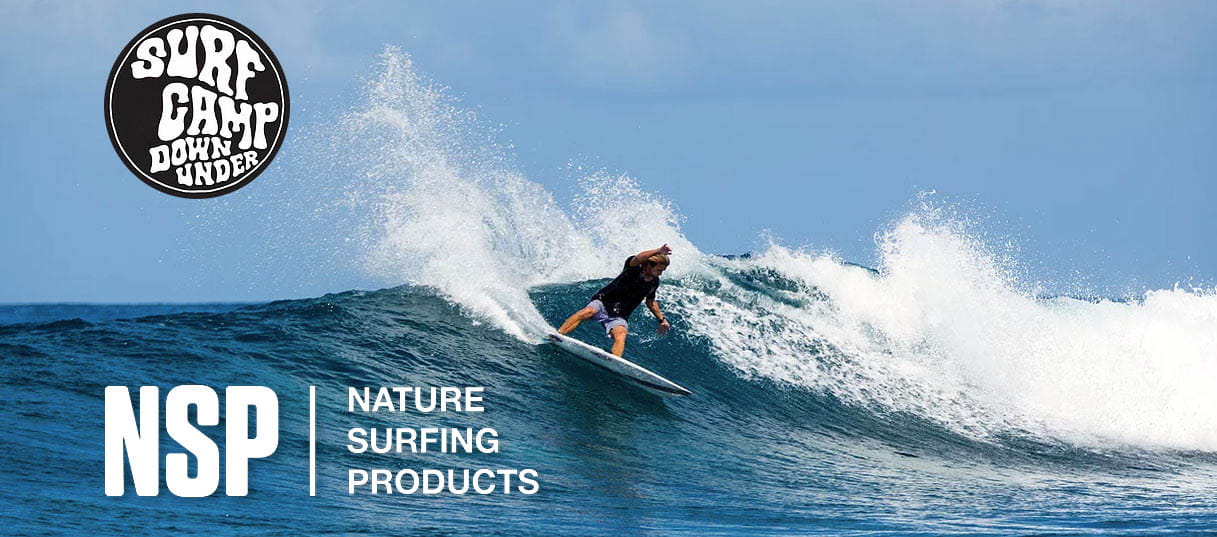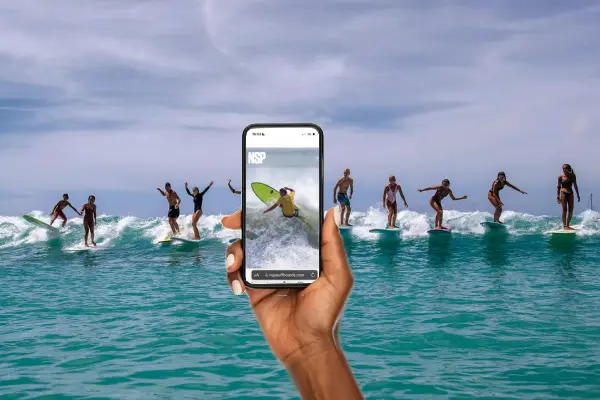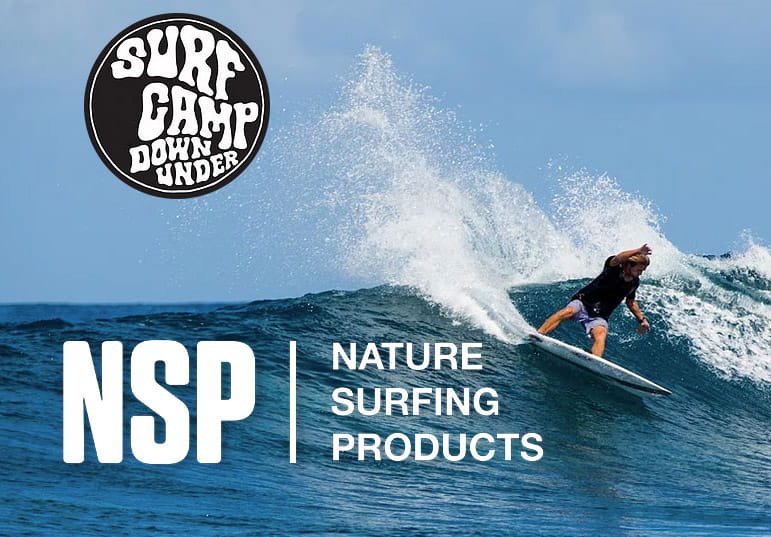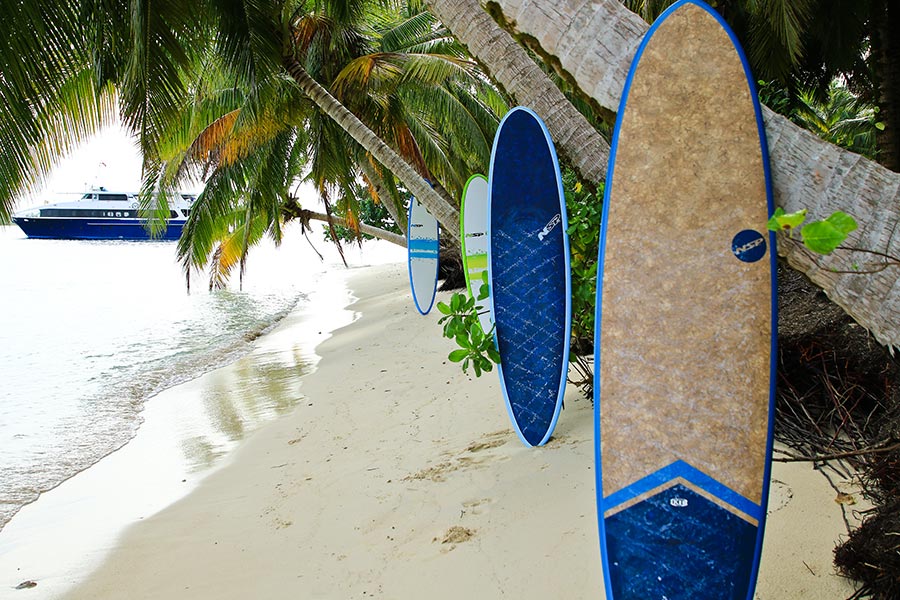How To Surf
Learning how to surf is going to take time and skill before you are confidently going to catch and surf a wave. And while some get going relatively easy, others struggle to make any progress at all in their first few sessions. But here’s some awesome news for you! Depending on your fitness, the conditions you are learning in and how often you get out there, your learning curve can be accelerated considerably.
The right tutoring is going to make a major difference, as we are prone to make beginner mistakes in pretty much anything we try. Having a coach with the necessary experience point this out to you is really going to help you progress.

And that’s where Surf Camp Down Under comes in. Located in New South wales, beginning and intermediate surfers will find Yamba to be the perfect spot for them to progress on whatever technique they are working on. Shayne and Courtney have been running their surf school for both locals and travellers coming through and their experience and school pretty much guarantees you are going to feel accomplished after a lesson with these legends.
In the videos below, Shayno will talk you through the different techniques required to get you standing on your very first wave and then some!
With over 30 years of surf coaching experience, Surf Camp Down Under coaches have taught at the biggest Surf Schools around the world before starting up Surf Camp Down Under in Beautiful Yamba. They have fine-tuned their expertise to suit whatever level of surfer or age you may be.
Deeply in touch with the Ocean, learning to surf in Yamba involves the occasional dolphin visit and smiles all around. If you are ever in the area, do go check them out!
Shayne Sutherland
Founder and owner of SurfCamp Down Under, Shayno has a big heart for the Ocean and those who want to surf it. Able to ride anything, Shayno and SDU will host beginner-, advanced and group clinics.
Courtney Ann
A true ocean lover and inspirational role model for all young girls. Make sure to follow her on @oceancourtney for health, surf and positive content from Yamba and beyond.
You’re going to want to get your pop-ups dialled in on the dry so when you are on the water your body and muscle memory is all dialled in. Remember, pop-ups are the most basic and essential move that you will be performing every time you try to catch a wave.
Key take-aways for learning how to surf:
- Lie on your chest, head facing the nose with your feet just on the tail. Keep your body straight
- Place your hands flat on the board at the bottom of your ribcage (as if you were doing a press-up), board width apart
- Hands by your side, thumbs in line with lower ribs
- Arch back; Push your chest off the board with your pelvis and upper thighs still in contact with the board.
- Shortboard pop-ups – don’t spring from the toes! You need to use your upper body strength to launch forwards. It’s a lot harder, but a necessity if you’re a short boarder looking to increase that upper body strength
There is another pop-up technique that sidesteps the whole pop-up-in-one-go, which we describe below:
This pop-up technique is awesome if you find that your pop-up timing is great, your paddling is on-point, yet most of the time when you do get up, the board immediately throws you off.
That’s ok – the balance completely changes once you stand up, so a little in-between step helps you to gradually progress into more routine pop-ups.
Make sure your paddling into the wave early, giving you enough time to get up. The next thing you do is push up, bringing your knees to your chest, followed by your front foot at a 45-degree angle.
The reason why your back foot should stay flat is that it helps to balance the board and keeps you lower on the board as well.
Key take-aways:
- Arch back; Push your chest off the board with your pelvis and quickly land on your knees while holding the rails
- Bring your front foot up
- Carefully bring up your back foot – keep it flat!
- Stare forward, and have some fun
Catching an unbroken (green) wave is one of the milestones you’ll have to conquer when learning to surf. When a wave hasn’t broken yet, it is easier to paddle into, as it hasn’t reached its full power. When you know what to look for and your timing is on point, you will be able to spot your waves in advance and catch them before they break, giving you enough time to work on your pop-ups and catch a ride.
With repetition, your ability to catch a green wave is going to develop quickly, and you will notice how you become better and better.
Key take-aways
- Paddle in fast
- Stay nice and low
Once you have the right stance and you start catching some waves, you are all set to adjust your weight distribution on the board and start making turns. The way you distribute your weight on your surfboard has a tremendous effect on the surfboard’s direction and speed over the water.
You can shift weight on your surfboard by either moving your feet when standing up (for example when a longboarder walks all the way to his board’s nose) or simply by shifting weight in between your feet, by moving your whole body (knees, hips, chest, etc.).
Because this is a beginner article, we should focus on the easiest and most popular way to turn your surfboard: by putting weight on different areas of the surfboard without moving your feet.
Key take-aways:
- Paddle in
- Turn your upper body
- look down the line/see where you need to go
- Stay nice and low
Duck dives are the ideal way to get through the break and making your way to where the good waves are. Basically, you temporarily push your board below the waterline to let the wave pass over you.
Note that this only works with smaller boards, so for boards that have too much volume for you to push them below the waterline, the Eskimo Roll below is another great way of getting through the breaks.
Key take-aways:
- Make sure you have some speed heading into the wave
- Push down with both arms, stretch them
- For good form, use your back knee to keep the board down
Eskimo rolls are an awesome move to get through the break when you are on a longboard or any board with excessive volume. For the smaller waves, the so-called “knee-slappers”, simply popping up allows the waves to travel over your board and keeping your head out of the water still.
For the waves that are too big to perform the push-up technique on, the Eskimo Roll is handy.
Key take-aways:
- Push-up for the small stuff
- Eskimo roll for the bigger ones
- Make sure you have some speed heading into the wave before doing the rolling
The Pig Dog is a classic and iconic surfing pose that you’ll see anywhere from shampoo commercials to surf shop posters. It is your first stylish move, and requires you to be able to paddle into the waves, comfortably and perform a backside turn to get positioned properly.
Key take-aways
- Initiate a backside turn with your hand on the rail
- Use your other arm to “feel” the wave
- Stay low
Anything you missed? If you need additional instructions or surf content, make sure to follow us.
The NSP P2 Soft Surf Wide
Shayno, Courtney and Surf Camp Downunder teach on the P2 Soft Surf Wide, and for good reason. It is unlike any other school board on the market. Designed to teach, students quickly gain confidence and the more accomplished students will venture out into the breaks on their own while you continue to coach those students that need a little more attention before they too are up and riding!
With a performance envelope that goes well beyond that first wave, students will often come back for the Surf Wide, as it is the board on which they progressed in the first place. Their comfort zone, their first ride.
P2 Soft Surf Wide Design:
- With an ultra-wide plane shape, rounded nose and wide tail this is the fastest way to get students up riding and experiencing the joys of surfing.
- The nose and tail handle and a middle carry handle to make handling these boards a breeze.
- Graphics on the deck designed for instructors to show students where to balance and position their feet.
- The Surf Wide has a focus on safety incorporating solid rubber bumpers nose and tail, crocodile textured soft-top deck, fast slick skin HD bottom and supplied with durable and soft bolt-through fins.
- FiberGlass T-Stringers make these boards exceptionally resistant to breaking and folding as opposed to regular boards or even foamies.
Fleet orders
Schools, rental venues and resorts interested in offering their clients the best possible teaching platform for surfers and those who want to learn, can reach out to our distributor network. Enter your country and reach out to a distributor near to you.

And of course, our standard NSP Privacy Policy applies.




